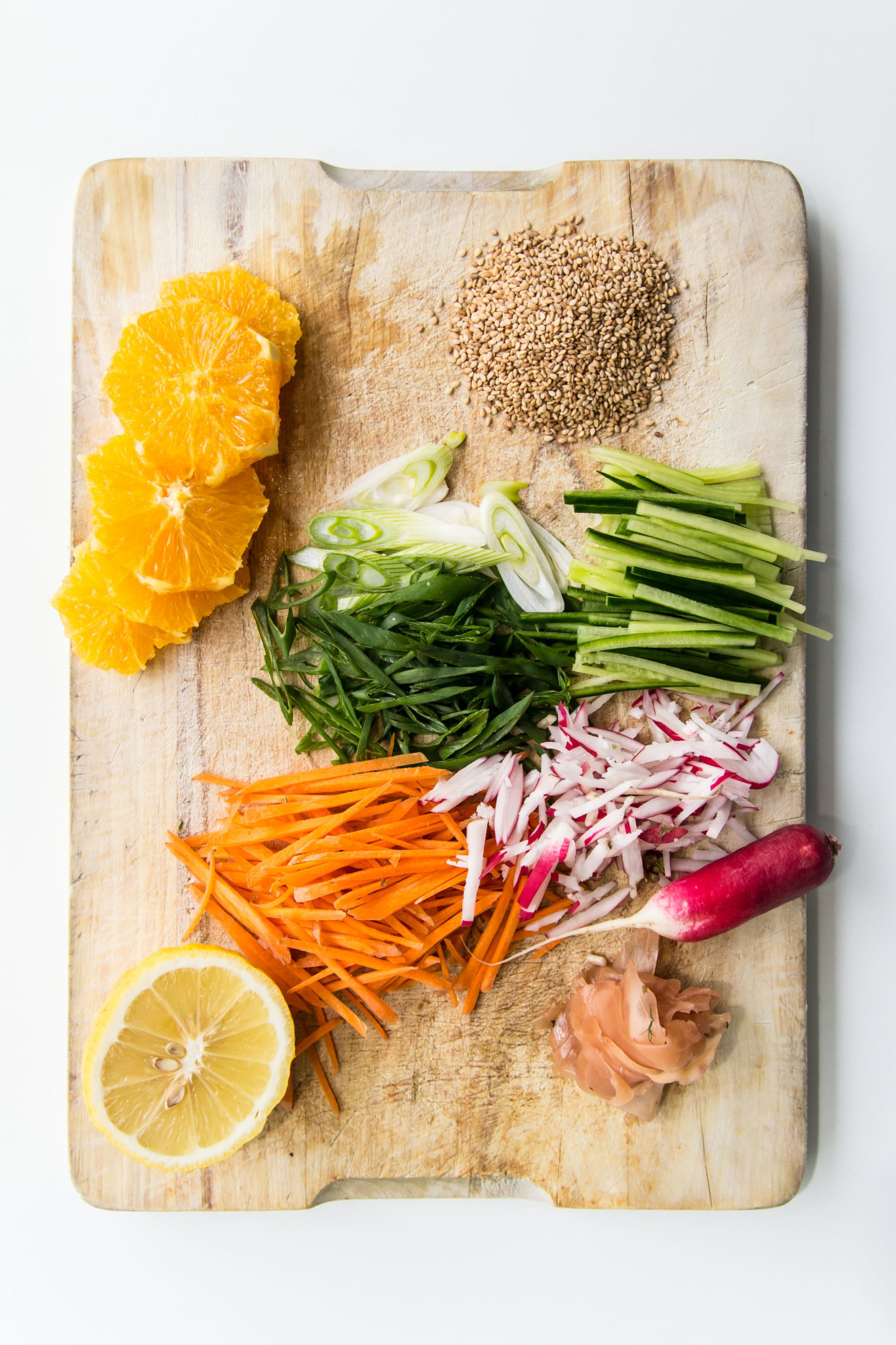Many people who eat my food say very often that they find it a wonderful way of eating, but that there’s no chance they can maintain it, as it takes too long to cook, the ingredients are unfamiliar and the preparations are too complicated.
Actually, I find it quite an easy and approachable way of cooking and eating, but I can also understand that it might be a step too far for some people. So, whatever diet you are following or not following, here are 10 easy and quick steps to adjusting your diet into a healthy diet without new ingredients, preparations and recipes. Not yet.
1) Salt
That’s one very easy adjustment you can make in your daily cooking and perhaps the one that will bring you the most health benefits.
Commercial Kitchen/Table salt is a mined and a highly processed product. It lacks minerals and has added chemicals that are harmful for the body. Sea salt is evaporated from sea water and includes many minerals that are essential for good health.
So first thing you could do is to replace kitchen salt with white sea salt.
2) Sugar
Although I am a vegan chef it’s not really my cup of soy milk to tell people they should stop eating this food or that food
Saying that, sugar is one thing I would absolutely loooove people to take out of their kitchens and plates.
Writing these lines, I realize I could write a whole separate blog only about sugar effects and healthy replacements, recipes and desserts. In short, refined sugar has proven to contribute directly to sicknesses as cancer, diabetes, heart attacks, depression, melancholia, insecurity, skin problems, memory and concentration problems, menstruation problems, intestinal problems and many more.
Simple sugars (monosaccharides and disaccharides) cause the sugar level in the blood to rise dramatically and are stored in the body as fat. Complex sugars (polysaccharides) are released slowly into the blood stream, and their calories transform into continuous and sustainable energy throughout the whole day.
Healthy alternatives to sugar would be Rice syrup and other grain based sweeteners, maple syrup, apple juice concentrate, fruits, dry fruits, sweet vegetables and more.

3) Pasta
White pasta is made from white wheat flour. White wheat flour is made from wheat grains that were polished, so their bran (outer layer) and germ are removed. The bran and the germ parts of the grain are the richest in protein, minerals, vitamins and fiber.
To make a long story short, refined grains “behave” in our body just like simple sugars. They are quickly digested, give a quick stream of energy (sugar rush) and then stored in the body as fat.
As a matter of fact there is no problem with eating carbohydrates and calories (measurement for the energy of carbohydrates), as long as these are complex carbohydrates from whole grains which will turn into energy and not fat.
Most whole wheat pastas are a bit heavy in texture and taste, I must say. My tip would be to try a few of them and to choose the ones that are lighter in color or made from spelt or kamut because they usually are nicer. In the Netherlands I always buy the ones from Terra-Sanna, they are the cheapest and the most delicious.
I also love Japanese noodle varieties as Udon, soba, somen, ramen. Also pastas made from rice flour, quinoa flour and many more wonderful healthy variations.
Alright, alright, so before you fall asleep from this overload of information and newly introduced changes into your diet, here is a super-duper easy to make Soba noodle salad. Besides, it also tastes great and looks great. So I can’t wait to see pictures of your own variations and designs of this salad.
Soba noodles are usually made from a combination of wheat flour and buckwheat flour that gives them a very satisfying taste. Some soba noodles are 100% buckwheat flour but their preparation and taste is somehow less nice.
Ginger pickles will give a nice kick to savory dishes. In case you can’t find them you can use any other kind of Japanese or even western pickles.
Soba noodle salad
4 servings
1 package soba noodles (about 350 gram)
For the sauce:
½ cup shoyu (organic soy sauce)
6 tbsps ginger juice
6 tbsps lemon juice
6 tbsps mirin
1 cucumber in matchsticks
1 carrot in matchsticks
5 radishes cut into thin slices
3 spring onions cut into thin slices
1 orange cut into round slices
Ginger pickles cut into thin slices
1 cup roasted sesame seeds.
Boil the noodles till al-dente, not too soft, and wash it with cold water.
Mix all the ingredients for the sauce.
Divide the noodles into individual plates and sprinkle with few spoons of the sauce.
Garnish with sesame seeds and the rest of the ingredients to make a colorful and decorative plates.
And here is my final result! And how does yours look like? Show me!!!
Photos: Wouter van der Wolk
Click here for the second part of this article







